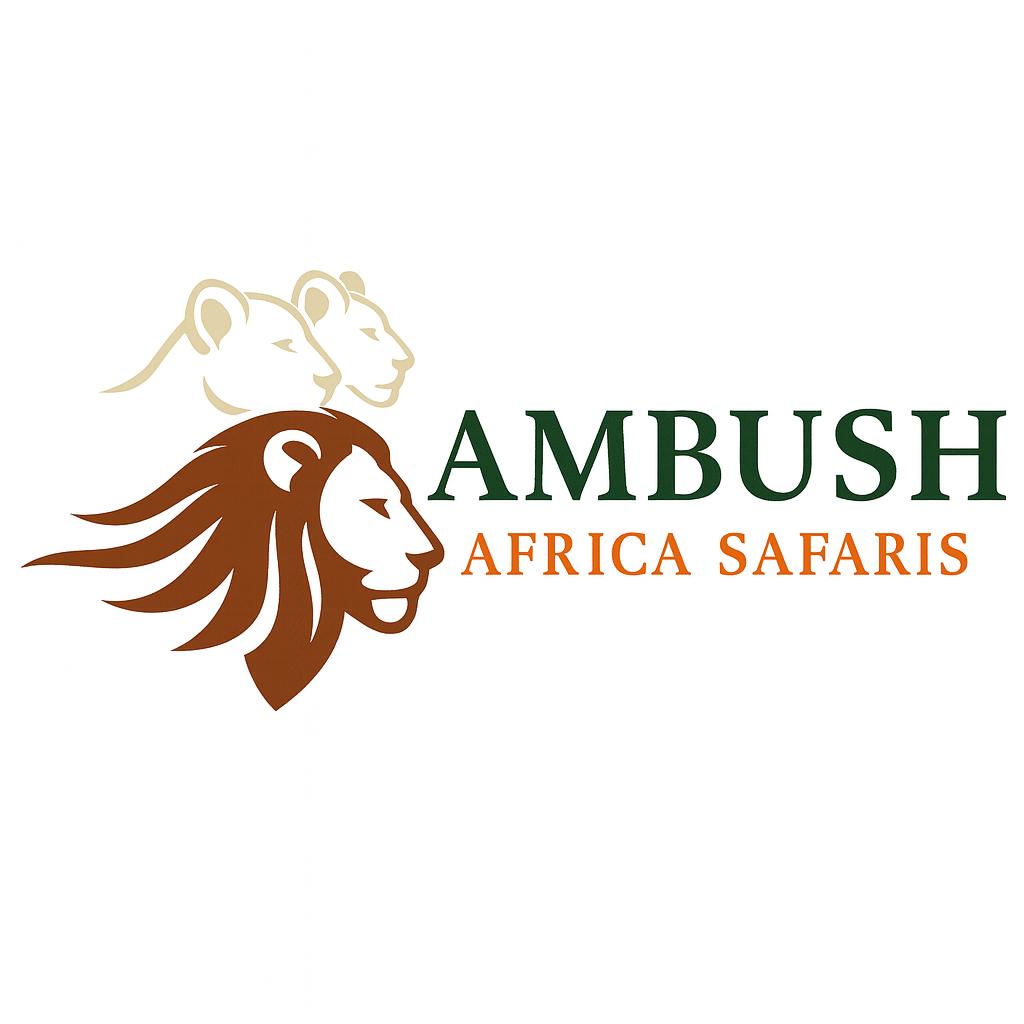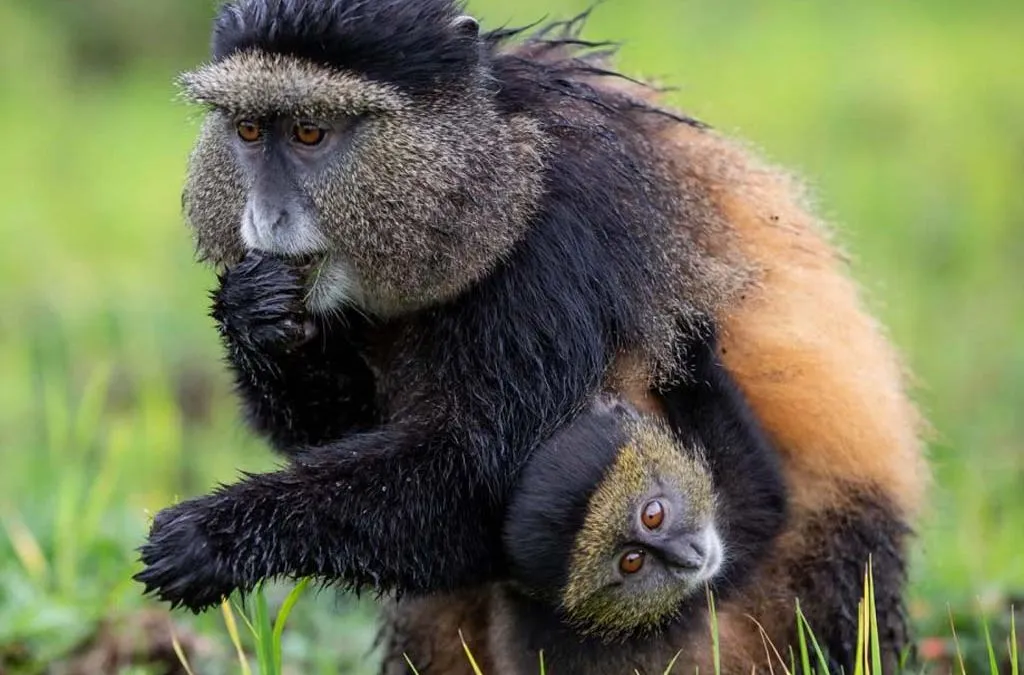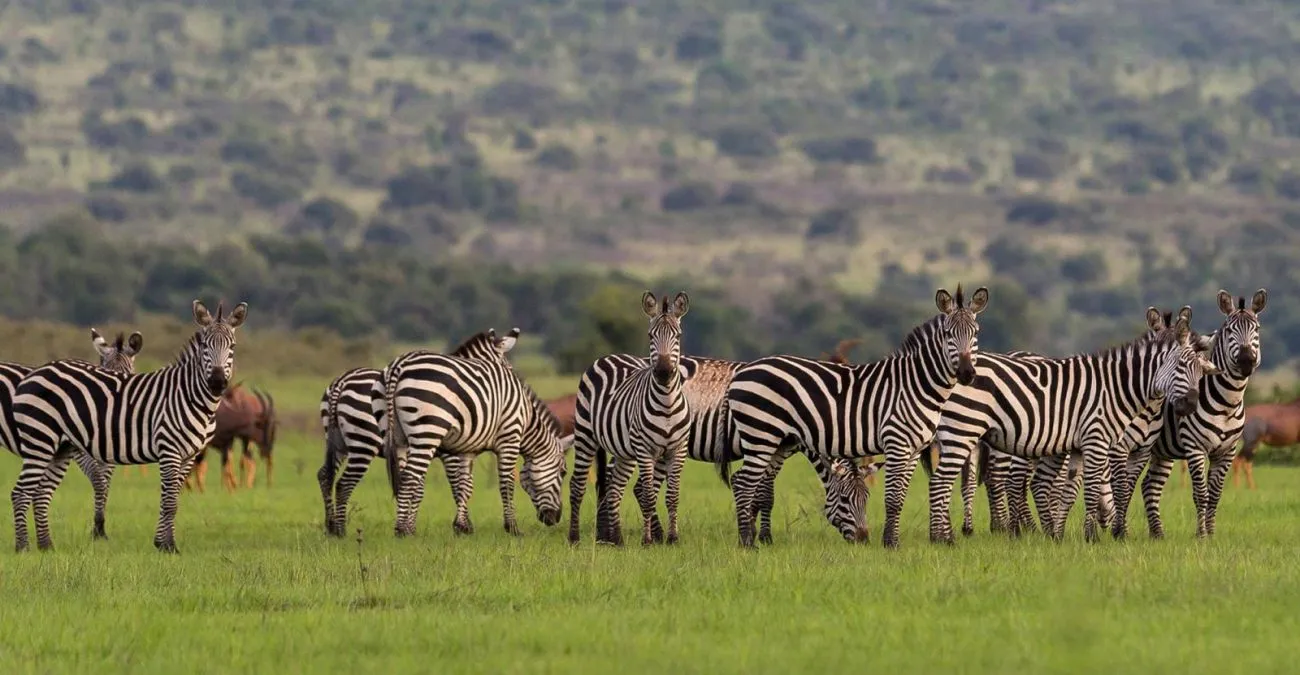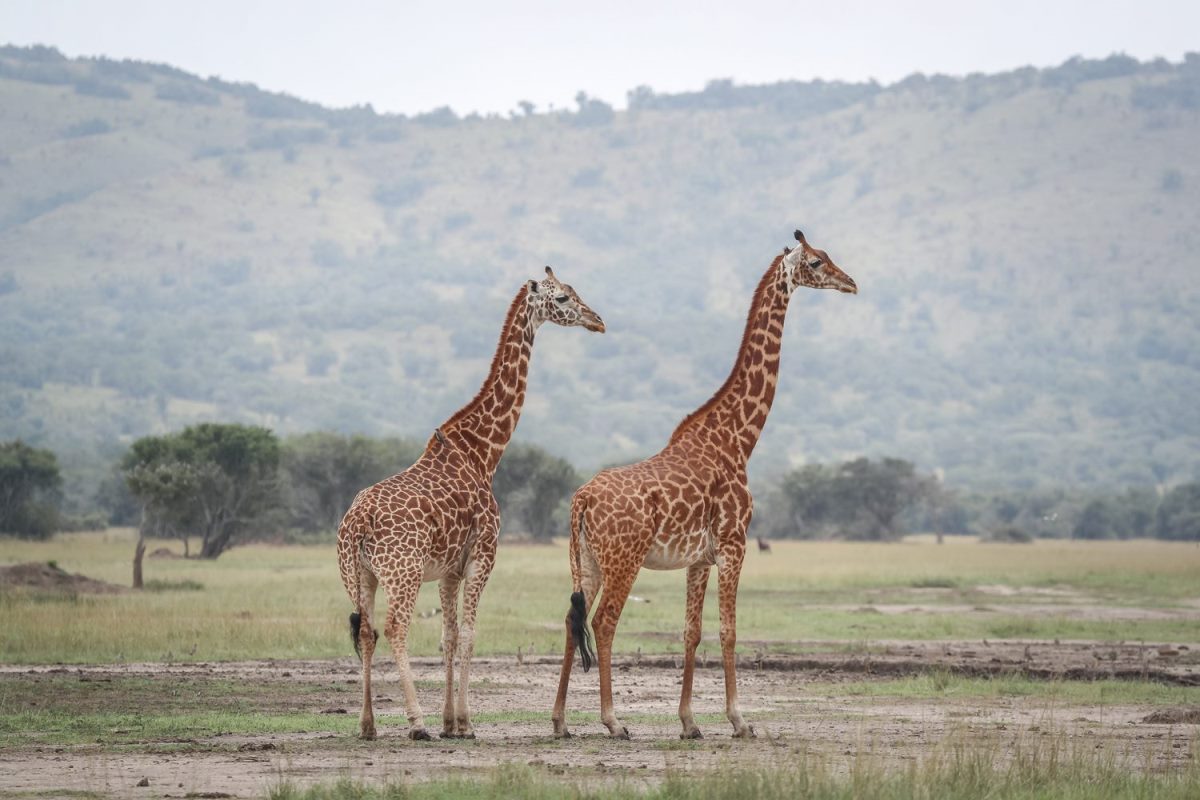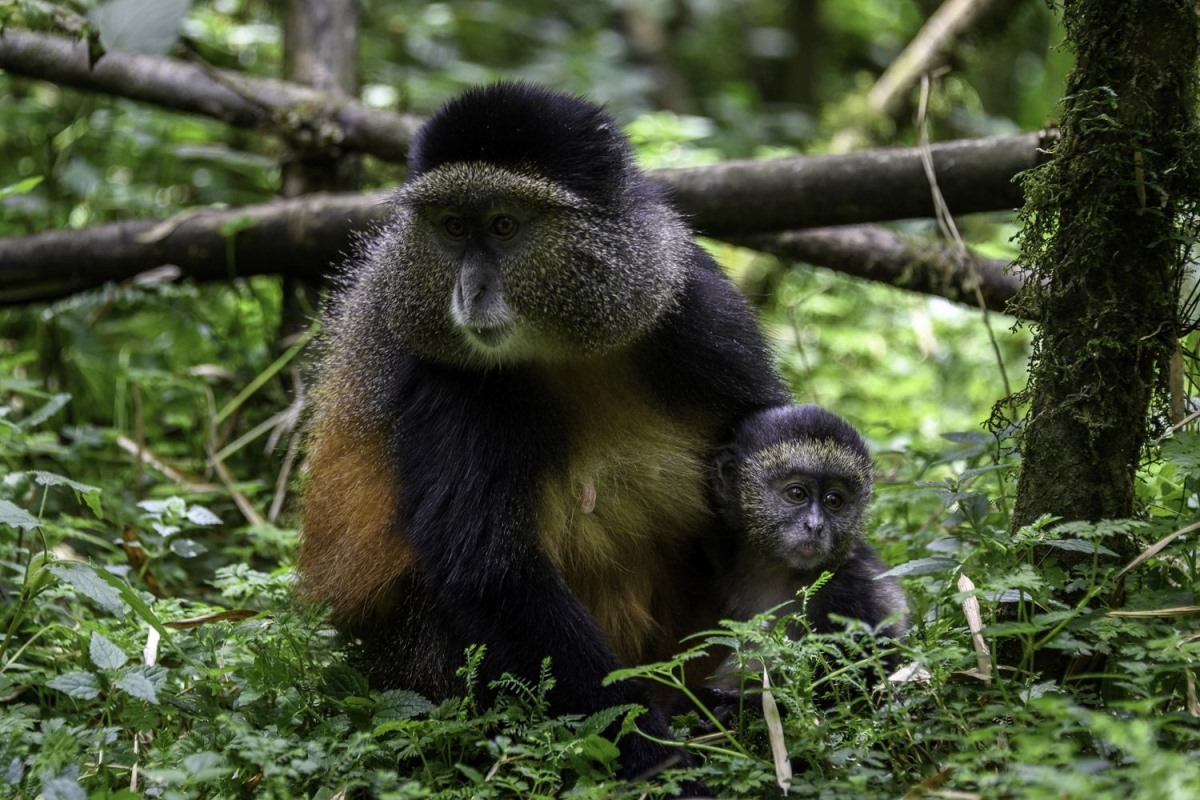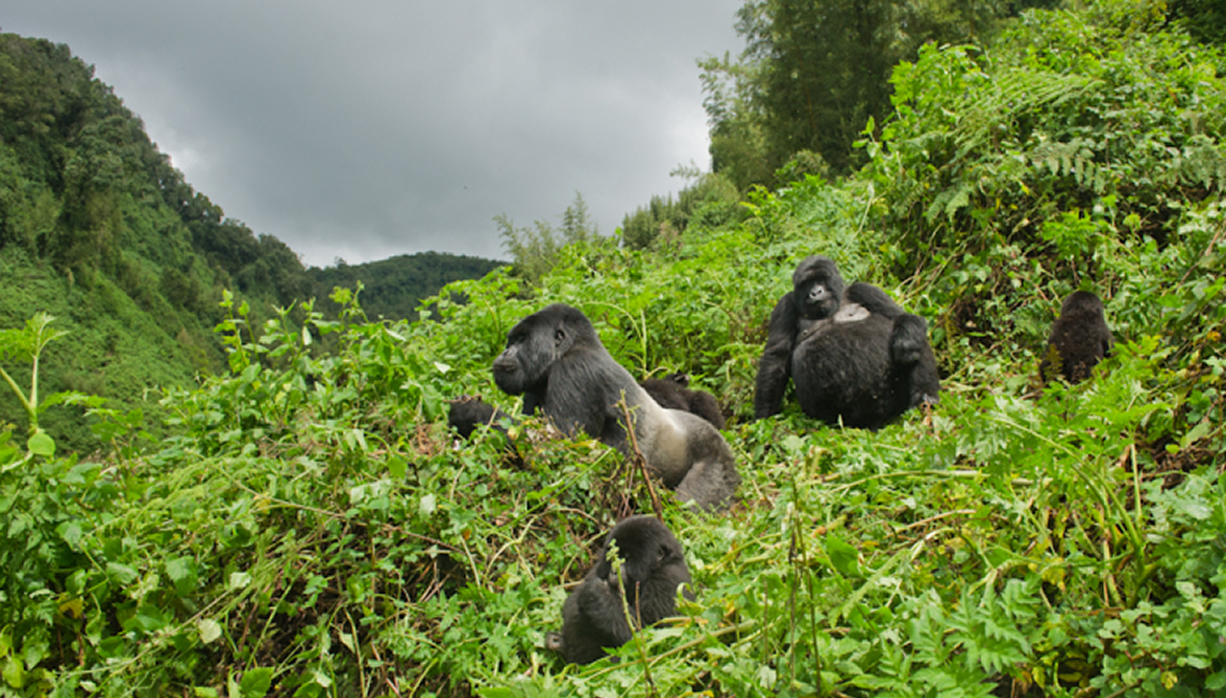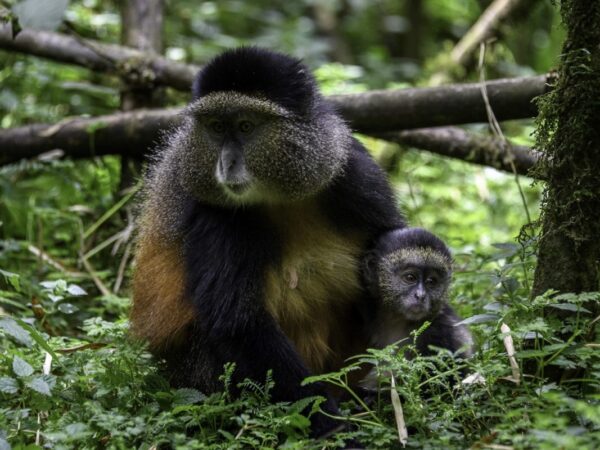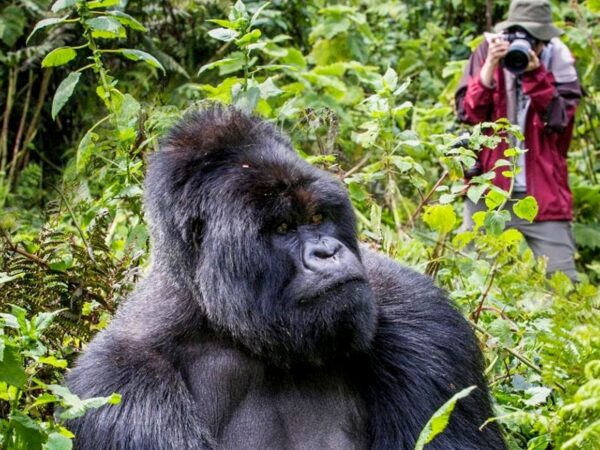Rwanda at a Glance
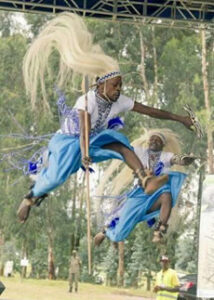 Rwanda is one of Africa’s most thrilling destinations – promising unique wildlife encounters, stunning landscapes, and warm, proud people. A land of astonishing beauty, Rwanda has risen phoenix-like from its troubled history. Today the tiny country of nearly 13 million people is Africa’s economic poster child, a model of reconciliation, regeneration and sustainability.
Rwanda is one of Africa’s most thrilling destinations – promising unique wildlife encounters, stunning landscapes, and warm, proud people. A land of astonishing beauty, Rwanda has risen phoenix-like from its troubled history. Today the tiny country of nearly 13 million people is Africa’s economic poster child, a model of reconciliation, regeneration and sustainability.
Known as the “Land of a Thousand Hills,” the main attraction in Rwanda is mountain gorilla trekking. Nothing can prepare you for it. The moment you encounter a mountain gorilla in the wild. From the land, to the wildlife, to the people. Everything is seamlessly woven into every level of the ecosystem. And the ripple effects are seen everywhere.
The mountain gorillas inhabit the lush high altitude rainforests surrounding the Virunga Mountains. Visitors to Nyungwe Forest National Park can go chimp trekking and see several other primate species. After successfully reintroducing lion, black rhino and other megafauna, Akagera National Park is now a Big 5 safari destination.
Best Time to Go

Volcanoes National Park
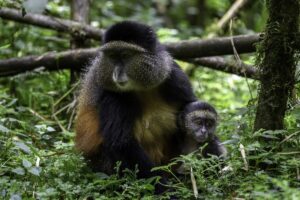 Volcanoes National Park, located in northern Rwanda, has two claims to fame: it is Africa’s oldest national park and contains a third of the world’s mountain gorilla population. The high-altitude rainforests provide lush bamboo stalks for 12 habituated gorilla families.
Volcanoes National Park, located in northern Rwanda, has two claims to fame: it is Africa’s oldest national park and contains a third of the world’s mountain gorilla population. The high-altitude rainforests provide lush bamboo stalks for 12 habituated gorilla families.
Because there’s a maximum of 8 trekkers per group, visitors are ensured a great, immersive experience with these incredible creatures. The time it takes to reach the gorilla family varies; most treks will require 2 to 3 hours hiking each way. Once the group reaches their gorilla family, they have an hour to spend time with them. Though gorilla permits are more expensive here than Uganda’s Bwindi Impenetrable Forest National Park, the terrain is less grueling in Volcanoes. Therefore, one only needs to be in reasonable condition to gorilla trek here. The best time to see the gorillas here are during the dry seasons (June to October and December to March).
Other wildlife within Volcanoes National Park includes blue monkey, black-fronted duiker, bushbuck, giant forest hog, African civet, genet, and buffalo. Golden monkeys, a rare, playful subspecies of blue-monkeys, are also located within the national park. The Rwenzori turaco and the forest francolin are among the more than 100 bird species recorded here.
Akagera National Park
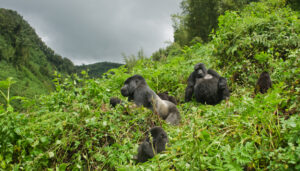 Akagera National Park is a protected area in eastern Rwanda covering 1,122 km2 (433 sq mi) along the international border with Tanzania. It was founded in 1934 and includes savannah, montane and swamp habitats. The park is named for the Kagera River which flows along its eastern boundary feeding into Lake Ihema and several smaller lakes. The complex system of lakes and linking papyrus swamps makes up over a third of the park, which is the largest protected wetland in Eastern-Central Africa.
Akagera National Park is a protected area in eastern Rwanda covering 1,122 km2 (433 sq mi) along the international border with Tanzania. It was founded in 1934 and includes savannah, montane and swamp habitats. The park is named for the Kagera River which flows along its eastern boundary feeding into Lake Ihema and several smaller lakes. The complex system of lakes and linking papyrus swamps makes up over a third of the park, which is the largest protected wetland in Eastern-Central Africa.
Akagera National Park, Rwanda, is almost unrecognisable today compared to over 20 years ago when it was on the verge of being irreparably degraded. The aftermath of the 1994 genocide against the Tutsi had a devastating impact on the environment, making its story of revival even more remarkable.
After practically eliminating poaching in just five years, lion and black rhino were reintroduced between 2015 and 2017, and white rhino were introduced in 2021 in a conservation move to help protect the species. With sound wildlife conservation management methods, Akagera is now home to thriving populations of wildlife, having grown from less than 5,000 in 2010 to almost 12,000 animals today.
Nyungwe Forest National Park
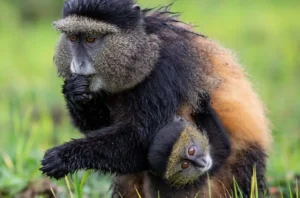 Nyungwe has been declared a UNESCO World Heritage Site and is one of the oldest rainforests in Africa, and the largest expanse of forest in Rwanda, covering 1,019 km2 of dense Afromontane forests, bamboo-covered slopes, grasslands and wetlands. The park feeds two of the world’s largest rivers, the Congo and the Nile, and provides a significant portion of Rwanda’s fresh water. Over 1,100 recorded plant species, 345 bird species and 85 known mammal species, including 13 of Africa’s primates – notably, chimpanzee, Ruwenzori black-and-white colobus and L’Hoest’s monkeys – are found in this exceptional landscape.
Nyungwe has been declared a UNESCO World Heritage Site and is one of the oldest rainforests in Africa, and the largest expanse of forest in Rwanda, covering 1,019 km2 of dense Afromontane forests, bamboo-covered slopes, grasslands and wetlands. The park feeds two of the world’s largest rivers, the Congo and the Nile, and provides a significant portion of Rwanda’s fresh water. Over 1,100 recorded plant species, 345 bird species and 85 known mammal species, including 13 of Africa’s primates – notably, chimpanzee, Ruwenzori black-and-white colobus and L’Hoest’s monkeys – are found in this exceptional landscape.
Over 1,060 plant and tree species can be found in the park with the taller tree species like the Carapa, Cyathea manniana, Engtandophrama, Newtonia and the Prinaria exelsium standing at heights of 1,900m above sea level. Species like the Balthacaria, Hagenia Syzygium, Macaranga and Podocarpus thrive at heights of 2500m and above. The Sub Alpine vegetation consisting of Shrubs and Bamboo like the Podocarpus, Erica johnstoni and the Phillipia live at heights of 2,950m above sea level. Other vegetation species like mosses and ferns are found throughout the forest.
Nyungwe is famous for Chimpanzee tracking, tracking other monkey species, biking through the Congo Nile Trail, birding walks, and forest and Canopy walks.
Lake Kivu
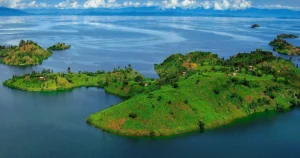 Lake Kivu is one of the African Great Lakes. It lies on the border between the Democratic Republic of the Congo and Rwanda, and is in the Albertine Rift, the western branch of the East African Rift. Lake Kivu empties into the Ruzizi River, which flows southwards into Lake Tanganyika.
Lake Kivu is one of the African Great Lakes. It lies on the border between the Democratic Republic of the Congo and Rwanda, and is in the Albertine Rift, the western branch of the East African Rift. Lake Kivu empties into the Ruzizi River, which flows southwards into Lake Tanganyika.
In the past, Lake Kivu drained toward the north, contributing to the White Nile. About 13,000 to 9,000 years ago, volcanic activity blocked Lake Kivu’s outlet to the watershed of the Nile. The volcanism produced mountains, including the Virungas, which rose between Lake Kivu and Lake Edward, to the north. Water from Lake Kivu was then forced south down the Ruzizi. This, in turn, raised the level of Lake Tanganyika, which overflowed down the Lukuga River.
For adventurous travellers, an exciting way to explore Rwanda is a kayaking tour on Lake Kivu, or mountain biking or hiking one of the 6 off-the-beaten path stages of the spectacular Congo Nile Trail.
General Information
Where is Rwanda located?
Rwanda is a landlocked country situated in East-Central Africa. It is bordered by Uganda, Tanzania, Burundi and the Republic of Congo.
What to see in Rwanda?
Rwanda is a land of staggering beauty with extraordinary biodiversity, iconic wildlife, volcanoes, montane rainforest and sweeping plains. Discover our areas by boat or 4×4 vehicle in Akagera National Park. Gorilla trekking is a must-do, as well as golden monkey trekking in Volcanoes National Park. Besides the rich wildlife, you can also explore Kigali, the bustling capital city, alive with tradition and culture. The country has many other exceptional national parks, natural forests and volcanic lakes, including Lake Kivu, one of Africa’s Great Lakes.
What do I pack for a safari in Rwanda?
While Rwanda has no strict dress code, women travellers are advised to dress conservatively. Warm clothing is recommended for the cooler months, and light clothing for summer. Bright colours and white are not advisable on safari.
What is the weather like in Rwanda?
Rwanda has a lovely temperate tropical highland climate. Thanks to its high elevation, it experiences lower temperatures than one would expect for an equatorial country. Kigali’s daily temperatures range from 12°C to 27°C, with very little variation throughout the year. The mountainous north-west, where Bisate is situated, is generally cooler than the lower-lying east.
What do I wear when gorilla trekking in Rwanda?
The forests tend to be rainy and wet so we suggest you pack warm, protective clothing and comfortable walking/hiking boots. Also a hat and lightweight parka or raincoat.
What is the culture of Rwanda?
There are many cultural groups that make up the Republic of Rwanda. However, the three most distinct ethnic groups are the Hutu, Tutsi and Pygmy Twa.
What does Rwanda mean?
The name ‘Rwanda’ is derived from a local Kinyarwanda verb, which means ‘expansion.’
Visas
Do I need a visa to travel to Rwanda?
Yes, you need a visa to enter Rwanda. Thirty-day tourist visas are free and available on arrival for citizens of member states of the Commonwealth, as well as for those of the African Union and the Francophone countries.
Do I need to apply for a permit to see gorillas in Rwanda?
Yes, as advised by the Rwanda Development Board (RDB), please get your permits before you arrive. The process is facilitated by our Wilderness Rwanda Travel Shop & Touring, and your Travel Designer. The reason for the permits is to ensure the sustainability of the conservation initiatives in place, and to further help the development of communities living around Volcanoes National Park.
Your Travel Designer can also advise on the options and costs of a standard gorilla trekking permit, a possible discounted permit or a private gorilla trekking permit.
Vaccinations
What are the COVID protocols for travelling to Rwanda?
We address all concerns surrounding COVID in line with the latest recommendations from the World Health Organization and other leading authorities. Please chat to your Travel Designer for the latest travel advisory updates, to ensure that you are prepared for all COVID travel requirements in Botswana before your departure.
Do I need to be vaccinated against yellow fever in Rwanda?
Yellow fever vaccination is not a requirement when visiting Rwanda. However, one of Rwanda’s entry requirements states that if you also travel to Kenya and Uganda, you need to be inoculated for yellow fever. Again, please make sure to check with your travel clinic and Travel Designer before your holiday.
Do I need to take malaria medication to go on holiday to Rwanda?
While Bisate’s elevation means that it is not located in a malaria-risk area, other regions in Rwanda that you may pass through do carry a risk, including Magashi in Akagera National Park. We advise our guests to check with their medical practitioner/travel clinic regarding malaria prevention. Please be sure to do this several weeks prior to departure, as some courses of medication need to be started in advance of your arrival in Rwanda.
Tipping Policy In East Africa
- Tipping practices in East Africa can vary depending on the country and the specific service you receive and how appreciate.
- Tipping is not mandatory but is appreciated for good service.
- In restaurants, a service charge may already be included in the bill. If not, a tip of 10-15% of the total bill is customary.
- For hotel staff, such as porters or room service, a tip of around $1-2 per service is typical.
- For safari guides and drivers, tipping is recommended for good services. The amount varies depending on the length of the safari and level of satisfaction, but a guideline is around $10-20 per person per day.
- It’s important to note that these are general guidelines, and tipping practices can vary. It’s always a good idea to consider the level of service you received and your own satisfaction when deciding whether and how much to tip. Additionally, some upscale establishments may have different expectations for tipping.
It’s recommended to carry small bills in the local currency to facilitate tipping, as it may not always be easy to obtain change for larger bills in upcountry restaurants and lodges.
SAFARIS IN RWANDA
Login to use
